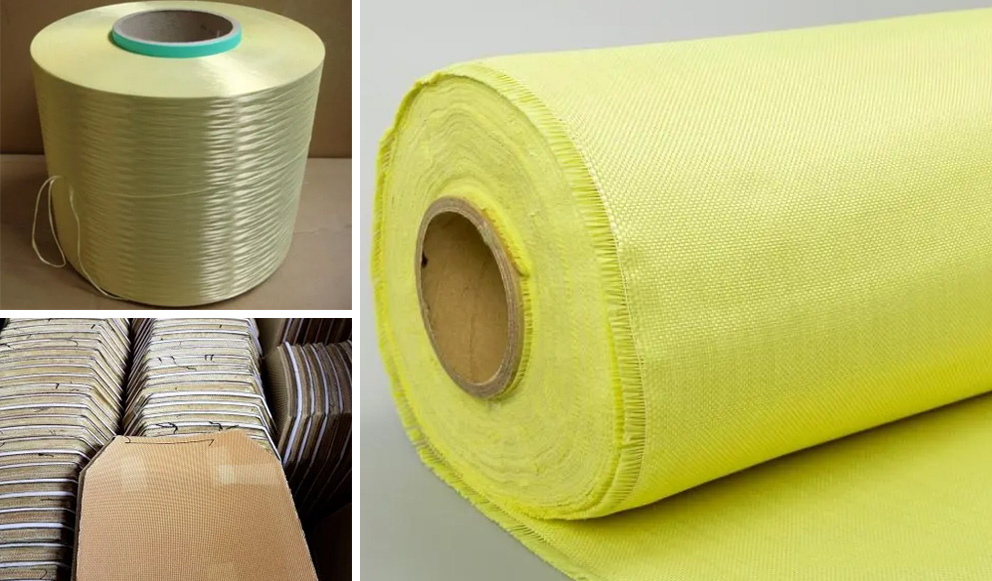Aramid fiber is a high-performance synthetic fiber, with ultra-high strength, high modulus, high-temperature resistance, acid and alkali resistance, lightweight, and other excellent characteristics. Its strength can be up to 5-6 times that of steel wire, modulus is 2-3 times that of steel wire or glass fiber, toughness is 2 times that of steel wire, and the weight is only 1/5 that of steel wire. At a high temperature of 560 ℃, aramid fibers can remain stable, do not decompose, and do not melt. In addition, it has good insulation and anti-aging properties, and a long service life. At present, the mainstream bulletproof equipment (such as bulletproof vests, and bulletproof helmets) commonly uses aramid fiber fabrics. Among them, low-gravity aramid fiber plain fabric is one of the main materials in the field of bulletproofing. Compared with traditional nylon undershirts and steel helmets, bulletproof undershirts and helmets with added aramid fibers are not only smaller and lighter but also 40% more effective against bullets.
The working principle of bulletproof vests can be understood in this way: when a bullet hits the fabric layer of the vest, shock and strain waves are generated around the point of impact. These waves through the rapid propagation and diffusion of the fiber, can shuttle in a large number of fibers, and then in a relatively large area to absorb the energy of the shock wave. It is this extensive energy absorption that effectively mitigates the impact of bullets on the human body, thus realizing the protective effect of bulletproof vests.
Bulletproof material and its excellent performance
The core of bulletproof vests lies in the high-strength fiber materials they use, of which para-aramid fibers, also known as para-aromatic polyamide fibers, are a highly respected bulletproof material. Its highly symmetrical chemical structure gives the molecular chain excellent rigidity, making it significantly different from conventional flexible chain polymers in terms of solubility, rheological properties, and processing.
Para-aramid fibers are known for their excellent physical and mechanical properties, including ultra-high strength, high modulus, and lightweight. Their specific strength is five to six times higher than that of conventional steel wire, and their specific modulus exceeds that of steel wire by a factor of two to three. In addition, the fibers exhibit excellent thermal properties, with high-temperature resistance, low expansion, and low thermal conductivity, and do not burn or melt. Para-aramid fibers are also known as “bulletproof fibers” because of their good insulation, corrosion resistance, and aging resistance.
Applications and Prospects of Para-Aramid Fiber
Para-aramid fiber, a key material in the defense and military industry, is widely used worldwide. According to statistics, the proportion of aramid in protective fibers in the U.S. is more than 50% and 10% in Japan. Its lightweight characteristics make aramid bulletproof vests and helmets, which can significantly improve the army’s rapid response capability. In addition, para-aramid is widely used in automotive, telecommunications, aerospace, and outdoor sports due to its excellent performance.
Post time: May-19-2025






